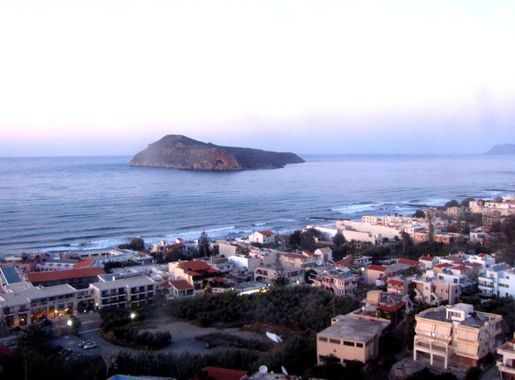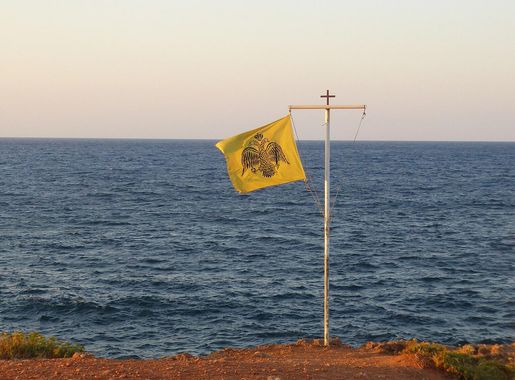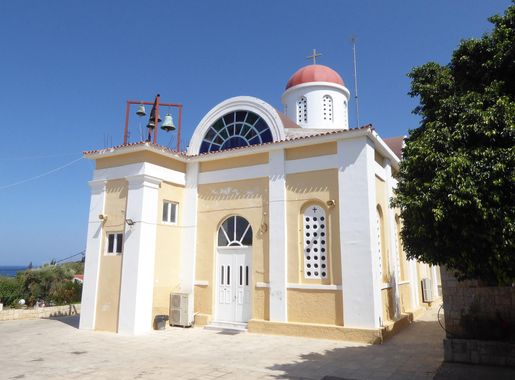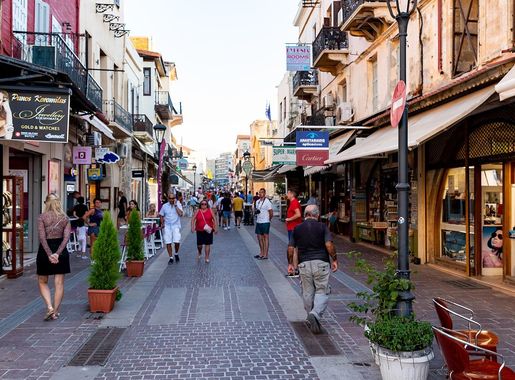
Agia Marina: The Jewel of Chania's Coastline
Discover Agia Marina in Chania, Greece – a coastal paradise with sandy beaches, vibrant local culture, and easy access to historical and cultural attractions.
Agia Marina, a picturesque coastal village in Chania, Greece, offers an idyllic blend of natural beauty and vibrant local culture. Nestled along the northern coast of Crete, this neighborhood is famed for its stunning sandy beaches that stretch as far as the eye can see, making it a haven for sun-seekers and water sports enthusiasts alike. The crystal-clear waters invite visitors for a refreshing swim, while the array of beach bars and tavernas provide the perfect setting to unwind with a cool drink or a delicious meal. The charm of Agia Marina extends beyond its stunning coastline. The village boasts a rich history and a warm, welcoming atmosphere. Wander through the narrow streets lined with traditional whitewashed houses, and you'll find a variety of local shops offering handmade crafts and souvenirs. The local cuisine is a highlight, with many restaurants serving up fresh seafood and authentic Cretan dishes that are sure to tantalize your taste buds. For those interested in exploring further, Agia Marina is conveniently located close to several notable attractions. Just a short drive away is the bustling town of Chania, where you can visit the historic Venetian Harbor, the Archaeological Museum, and the lively Chania Market. Whether you're looking to relax on the beach, savor local flavors, or immerse yourself in the rich culture, Agia Marina is a destination that promises a memorable experience.
Local tips in Agia Marina
- Visit early in the morning to secure a good spot on the beach and enjoy the tranquil atmosphere.
- Try the local seafood dishes at seaside tavernas for an authentic culinary experience.
- Rent a bike or a car to explore nearby attractions such as the Venetian Harbor in Chania.
- Bring comfortable walking shoes for exploring the village's narrow streets and local shops.
- Check out the local markets for unique handmade crafts and souvenirs.
Agia Marina: The Jewel of Chania's Coastline
Agia Marina, a picturesque coastal village in Chania, Greece, offers an idyllic blend of natural beauty and vibrant local culture. Nestled along the northern coast of Crete, this neighborhood is famed for its stunning sandy beaches that stretch as far as the eye can see, making it a haven for sun-seekers and water sports enthusiasts alike. The crystal-clear waters invite visitors for a refreshing swim, while the array of beach bars and tavernas provide the perfect setting to unwind with a cool drink or a delicious meal. The charm of Agia Marina extends beyond its stunning coastline. The village boasts a rich history and a warm, welcoming atmosphere. Wander through the narrow streets lined with traditional whitewashed houses, and you'll find a variety of local shops offering handmade crafts and souvenirs. The local cuisine is a highlight, with many restaurants serving up fresh seafood and authentic Cretan dishes that are sure to tantalize your taste buds. For those interested in exploring further, Agia Marina is conveniently located close to several notable attractions. Just a short drive away is the bustling town of Chania, where you can visit the historic Venetian Harbor, the Archaeological Museum, and the lively Chania Market. Whether you're looking to relax on the beach, savor local flavors, or immerse yourself in the rich culture, Agia Marina is a destination that promises a memorable experience.
Iconic landmarks you can’t miss
Old Venetian Port of Chania
Discover the timeless beauty and rich history of the Old Venetian Port of Chania, where stunning architecture meets vibrant local culture.
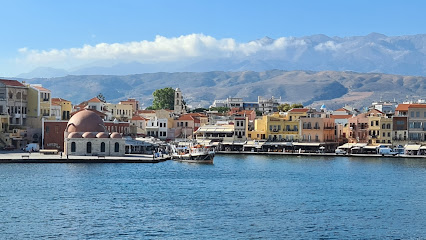
Lighthouse of Chania
Explore the stunning Lighthouse of Chania, a historical beacon of beauty and maritime heritage in the heart of Crete's charming old harbor.
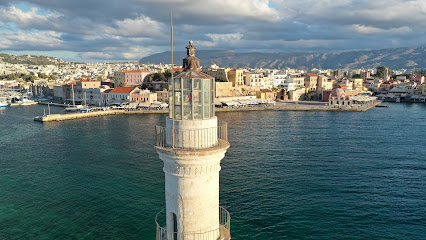
Horiatiko Taverna
Experience authentic Greek flavors and warm hospitality at Horiatiko Taverna in Agia Marina, a must-visit for every food lover.
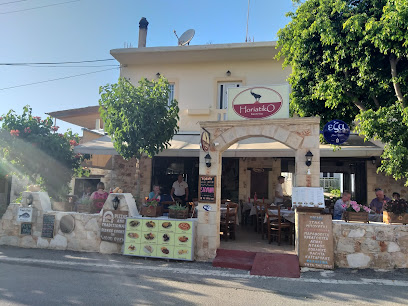
Sabbionara Bastion
Discover the historical treasures and breathtaking views at Sabbionara Bastion, an iconic landmark in Chania, Greece.
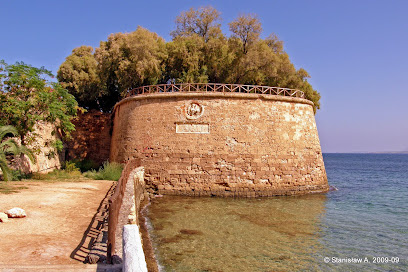
Beach Agia Marina
Discover the beauty of Agia Marina Beach in Crete, where golden sands meet azure waters for an unforgettable Mediterranean experience.
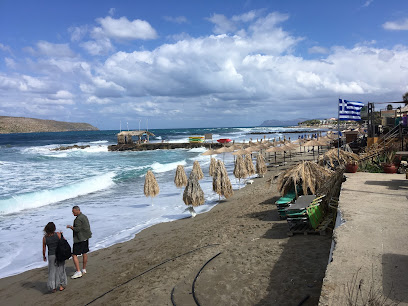
Paralia Agia Marina
Experience the stunning beauty and vibrant atmosphere of Paralia Agia Marina, a must-visit beach destination on the enchanting Greek island.
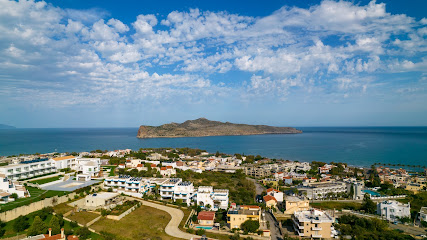
Scuba World in Agia Marina Chania
Experience the underwater wonders of Crete at Scuba World in Agia Marina, where adventure meets breathtaking marine life.
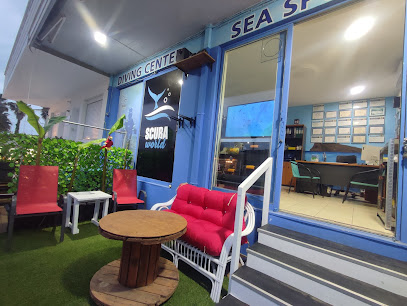
The Little Fun Train Main Station - Agia Marina
Discover the enchanting beauty of Agia Marina aboard The Little Fun Train, a delightful tour experience offering stunning landscapes and local charm.
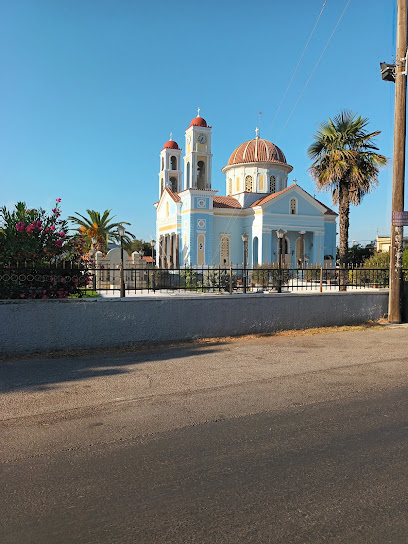
Paraflight Sea Sports
Experience the thrill of water sports at Paraflight Sea Sports in Agia Marina, Greece – where adventure meets stunning coastal views.
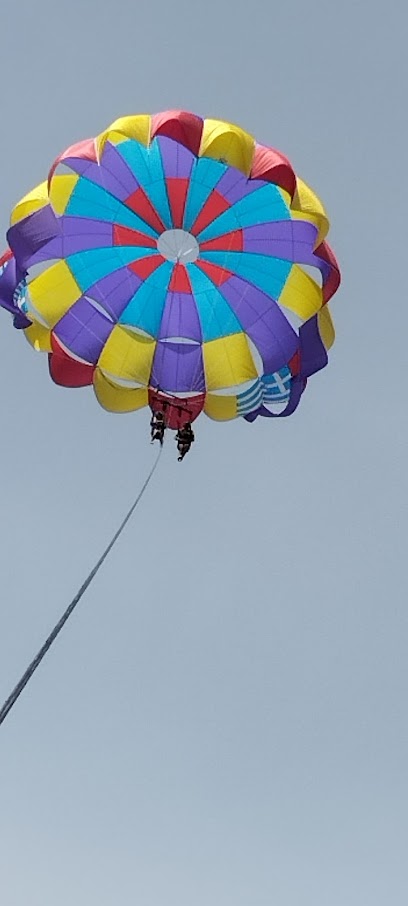
Chania Beach Party
Experience the vibrant atmosphere of Chania Beach Party, where Cretan culture, music, and cuisine come together for an unforgettable seaside celebration.
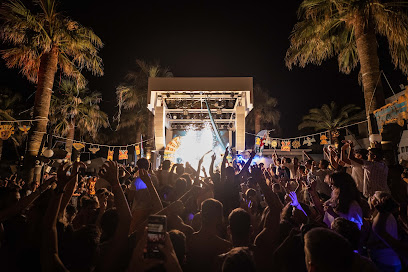
Agia Marina Church
Discover the spiritual charm of Agia Marina Church in Chania, Greece, a stunning example of Greek Orthodox architecture and a cultural landmark.
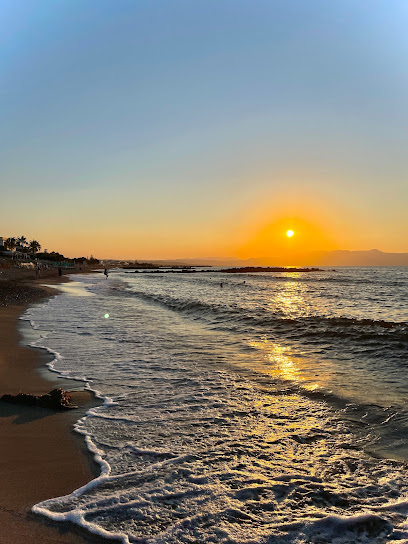
war Memorial
Explore the Chania War Memorial, a poignant landmark honoring the sacrifices of soldiers in Crete's historic past, set in the beautiful city of Chania.
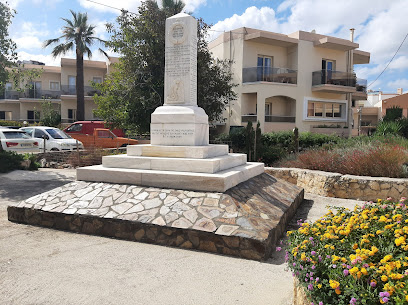
Unmissable attractions to see
Maritime Museum of Crete
Explore the fascinating maritime history of Crete at the Maritime Museum, a cultural gem in the heart of Chania.
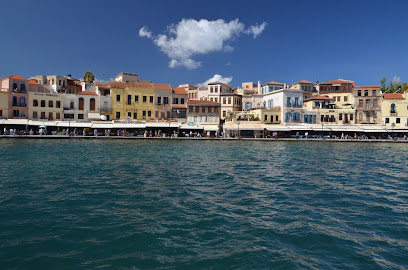
Firka Venetian Fortress | Ενετικό φρούριο Φιρκά
Explore the historic Firka Venetian Fortress in Chania, a captivating blend of history, architecture, and stunning coastal views.
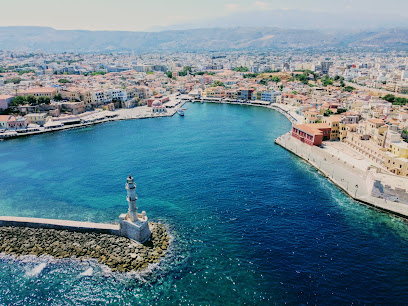
War Shelter Platanias
Explore the War Shelter Platanias in Crete, an evocative historical landmark that reveals the island's wartime past through engaging exhibits and personal stories.
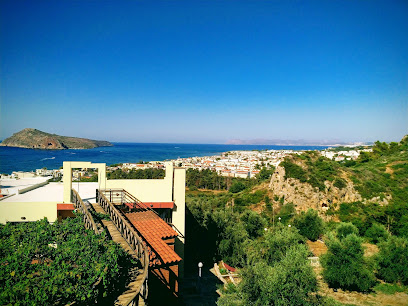
Byzantine/Post-Byzantine Collection of Chania | Βυζαντινή/Μεταβυζαντινή Συλλογή Χανίων
Explore the rich heritage of the Byzantine era at the Byzantine/Post-Byzantine Collection in Chania, Crete, showcasing exquisite art and artifacts.
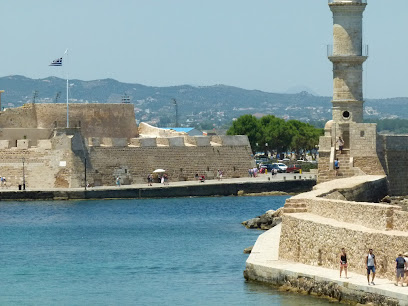
Sea Adventures
Experience thrilling water sports and breathtaking views at Sea Adventures in Chania, a must-visit destination for every traveler in Crete.

Mikis Theodorakis house
Explore the inspiring Mikis Theodorakis House in Chania, a cultural landmark dedicated to the legendary Greek composer and his musical legacy.
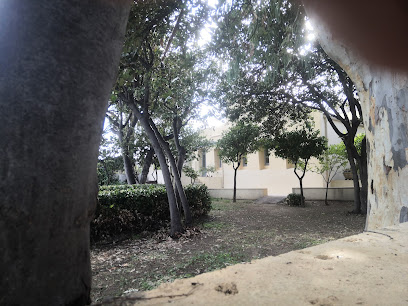
Essential places to dine
Raeti Taverna Restaurant
Experience authentic Mediterranean flavors at Raeti Taverna Restaurant in Agia Marina - where every meal tells a story.
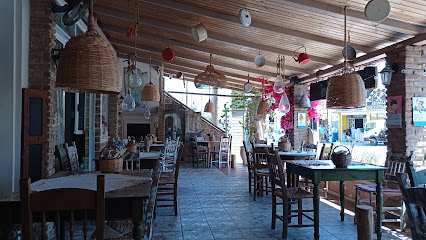
Horiatiko Taverna
Discover Horiatiko Taverna in Agia Marina for authentic Greek cuisine served in a warm and welcoming atmosphere.
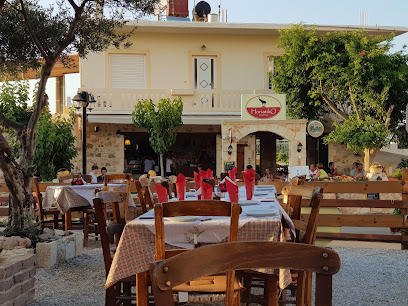
Nymfi Restaurant
Experience authentic Greek flavors at Nymfi Restaurant in Agia Marina – a culinary delight for every food lover visiting Crete.
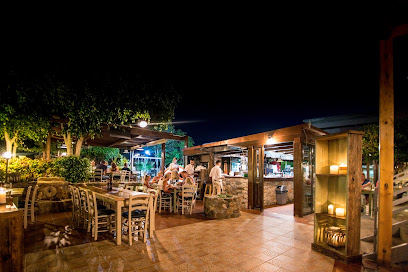
Arhondiko Traditional taverna
Discover authentic Greek cuisine at Arhondiko Traditional Taverna in Agia Marina - where every dish tells a story.

Nostos Restaurant
Discover authentic Greek cuisine at Nostos Restaurant in Agia Marina – where tradition meets flavor in every delightful dish.
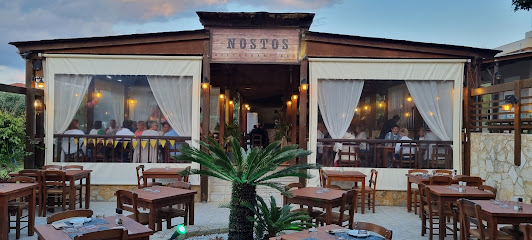
Kri-Kri Restaurant
Discover the essence of Mediterranean cuisine at Kri-Kri Restaurant in Agia Marina, Chania - where tradition meets flavor.
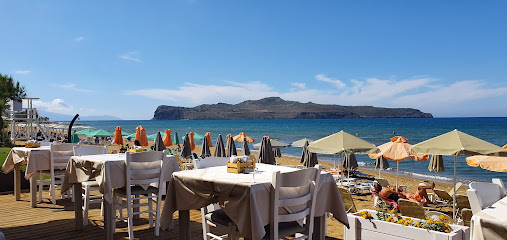
Romeos Family Restaurant
Experience authentic Mediterranean cuisine at Romeos Family Restaurant in Agia Marina - perfect for families seeking delicious meals in a friendly atmosphere.
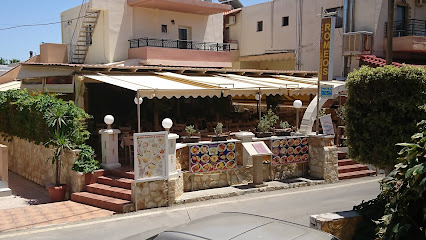
Refresh beach bar & kitchen
Discover Refresh Beach Bar & Kitchen in Agia Marina for an unforgettable dining experience with stunning ocean views and delicious local cuisine.

Olivia´s Bar & Restaurant
Experience authentic Cretan cuisine with breathtaking views at Olivia's Bar & Restaurant in Agia Marina, Chania.
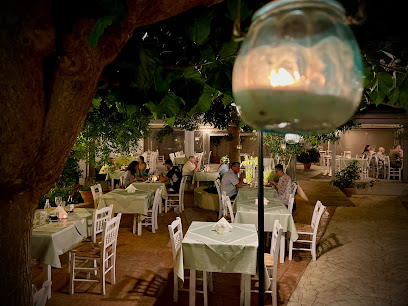
Elaion Restaurant
Experience exquisite Mediterranean cuisine at Elaion Restaurant in Chania - where flavor meets tradition in an enchanting atmosphere.
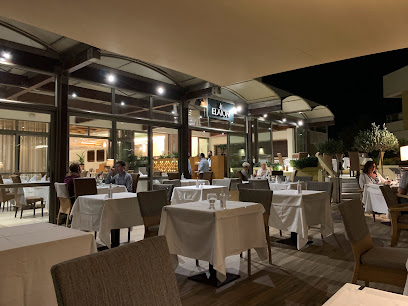
Markets, malls and hidden boutiques
Just Creta
Discover a shopper's paradise at Just Creta, where local charm meets international brands in Agia Marina.
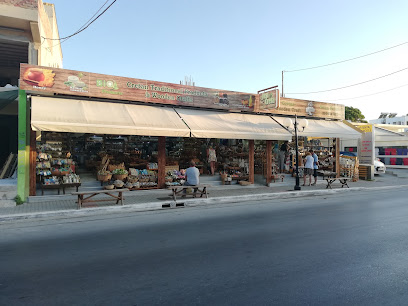
Jacobs little shop -Hand made ceramics-jewellery & gifts
Explore Jacobs Little Shop in Agia Marina for handcrafted ceramics, unique jewelry, and authentic gifts that capture the essence of local artistry.
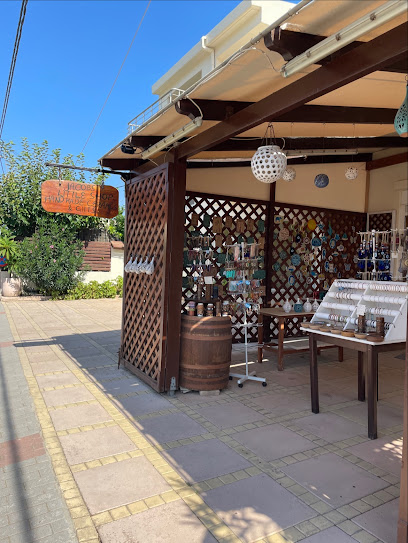
My Precious
Explore 'My Precious' in Chania: A vibrant department store offering a unique selection of Cretan products and souvenirs for every traveler.
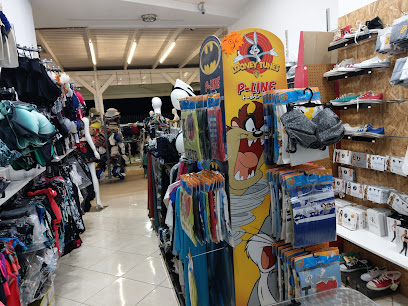
Juls art and school
Explore the vibrant world of Greek fashion accessories at Juls Art and School in Agia Marina, where art meets style.

Elephant Store
Uncover unique Cretan fashion at Elephant Store in Chania, where tradition meets contemporary style in a vibrant shopping experience.
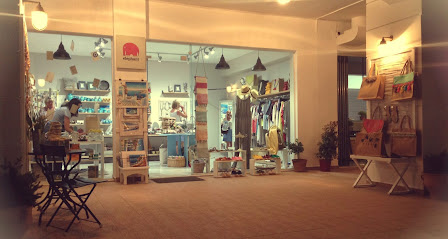
My precious megastore
Discover My Precious Megastore in Agia Marina, a vibrant shopping mall with a unique blend of local treasures and international brands.
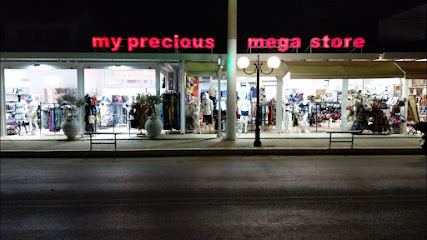
Artemis Greek Art Novelties
Explore authentic Greek pottery and art at Artemis Greek Art Novelties, a treasure trove of unique handmade crafts in Agia Marina.
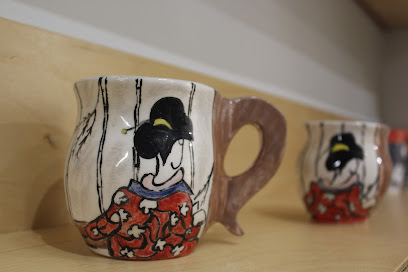
JOY'S BOUTIQUE
Explore the finest selection of fashion accessories at Joy's Boutique, a hidden gem in Agia Marina that celebrates local craftsmanship and style.
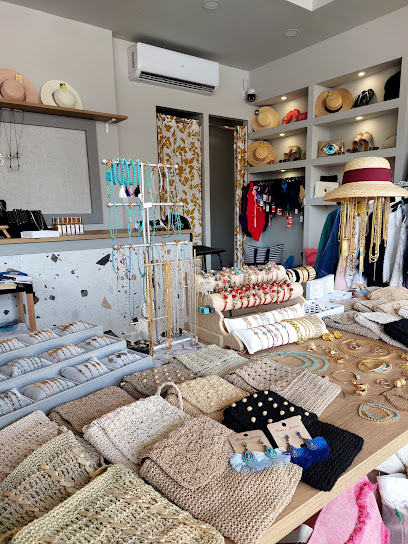
Nature - Cretan natural products
Explore Cretan Natural Products in Agia Marina for authentic souvenirs and local treasures that embody the spirit of Crete.
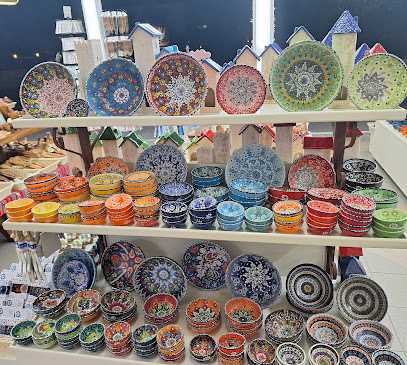
ED Gifts and Accessories
Uncover a delightful selection of unique gifts and accessories in Agia Marina, a perfect stop for souvenirs that embody the spirit of Greece.
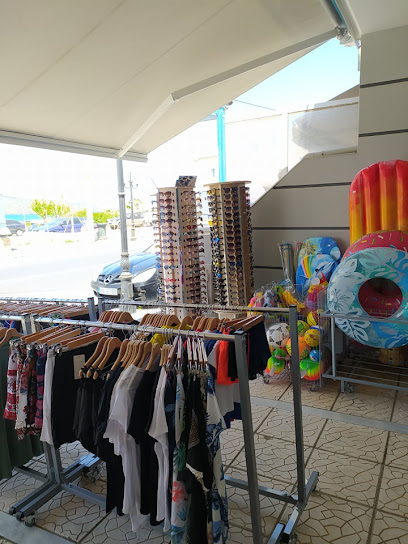
Essential bars & hidden hideouts
Ammos & Ilios
Experience the ultimate beach bar atmosphere at Ammos & Ilios in Agia Marina, where the Mediterranean meets relaxation and vibrant nightlife.
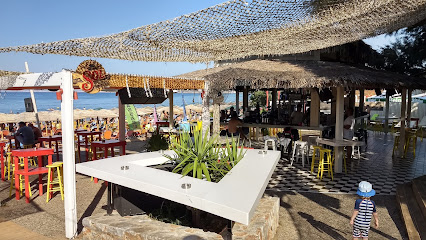
Red Havana Premium
Experience the vibrant energy of Red Havana Premium in Agia Marina, where exceptional cocktails and delicious cuisine meet lively entertainment.
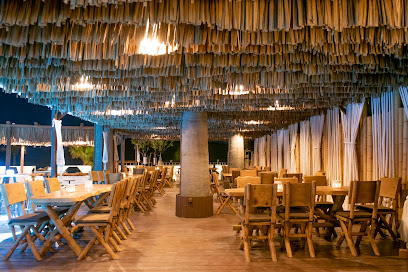
Rodakino Beach Bar
Experience the tranquil charm of Rodakino Beach Bar, where refreshing drinks and stunning coastal views await every visitor.
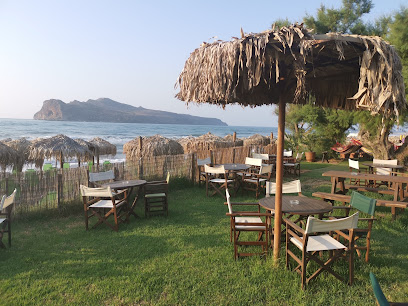
Isola seaside restaurant-sushi & cocktail bar
Experience the best of Agia Marina at Isola Seaside Restaurant, where exquisite sushi meets stunning views and vibrant cocktails.
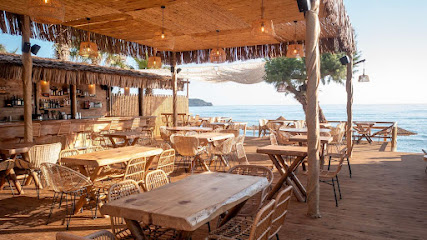
Kahlua Cocktail Bar
Experience exquisite cocktails and vibrant nightlife at Kahlua Cocktail Bar in Agia Marina, where every sip offers a taste of paradise.

KISS SPORT BAR
Immerse yourself in the lively nightlife of Agia Marina at KISS SPORT BAR, where great drinks and entertainment await.

Oki Bar
Discover Oki Bar in Chania, a cocktail haven offering innovative drinks and a lively atmosphere perfect for any time of day.
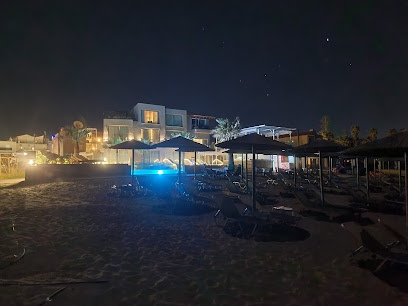
Blue Horizon
Experience the tranquility of Blue Horizon, a bar in Agia Marina where refreshing drinks meet stunning coastal views, perfect for every traveler.
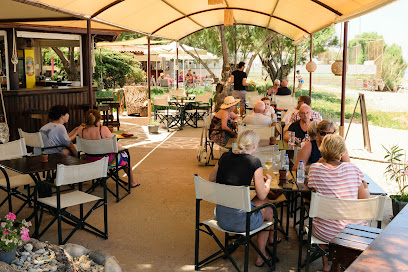
The George
Experience the vibrant nightlife of Agia Marina at The George, where innovative cocktails and a lively atmosphere await every visitor.
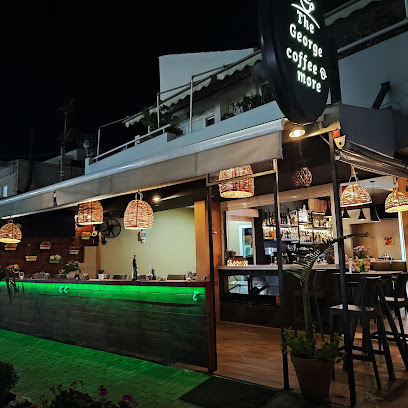
My Place
Discover My Place, Agia Marina's premier cocktail bar, where creative drinks meet a vibrant atmosphere for an unforgettable night out.
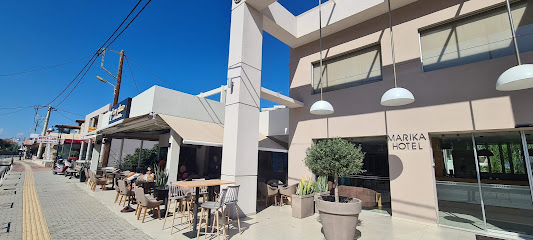
Local Phrases
-
- HelloΓεια σας
[Ya sas] - GoodbyeΑντίο
[Adio] - YesΝαι
[Ne] - NoΌχι
[Ohi] - Please/You're welcomeΠαρακαλώ
[Parakalo] - Thank youΕυχαριστώ
[Efharisto] - Excuse me/SorryΣυγγνώμη
[Signomi] - How are you?Πώς είστε;
[Pos iste?] - Fine. And you?Καλά. Εσείς;
[Kala. Esis?] - Do you speak English?Μιλάτε αγγλικά;
[Milate anglika?] - I don't understandΔεν καταλαβαίνω
[Den katalaveno]
- HelloΓεια σας
-
- I'd like to see the menu, pleaseΘα ήθελα να δω το μενού, παρακαλώ
[Tha ithela na do to menou, parakalo] - I don't eat meatΔεν τρώω κρέας
[Den troo kreas] - Cheers!ΥΓΕΙΑ!
[Yia] - I would like to pay, pleaseΘα ήθελα να πληρώσω, παρακαλώ
[Tha ithela na plirosos, parakalo]
- I'd like to see the menu, pleaseΘα ήθελα να δω το μενού, παρακαλώ
-
- Help!Βοήθεια!
[Voithia!] - Go away!Πήγαινε μακριά!
[Pigene makria!] - Call the Police!Καλέστε την Αστυνομία!
[Kaleste tin Astinomia!] - Call a doctor!Καλέστε γιατρό!
[Kaleste giatro!] - I'm lostΈχω χαθεί
[Eho hathi] - I'm illΕίμαι άρρωστος
[Ime arrostos]
- Help!Βοήθεια!
-
- I'd like to buy...Θα ήθελα να αγοράσω...
[Tha ithela na agoraso] - I'm just lookingΑπλά κοιτάω
[Apla kitao] - How much is it?Πόσο κοστίζει;
[Poso kostizi?] - That's too expensiveΑυτό είναι πολύ ακριβό
[Afto ine poli akribo] - Can you lower the price?Μπορείτε να μειώσετε την τιμή;
[Borite na miisete tin timi?]
- I'd like to buy...Θα ήθελα να αγοράσω...
-
- What time is it?Τι ώρα είναι;
[Ti ora ine?] - It's one o'clockΕίναι μία ώρα
[Ine mia ora] - Half past (10)Μισή (10)
[Misi (deka)] - MorningΠρωί
[Proi] - AfternoonΑπόγευμα
[Apoyevma] - EveningΒράδυ
[Vradi] - YesterdayΧθες
[Hthes] - TodayΣήμερα
[Simera] - TomorrowΑύριο
[Avrio] - 1Ένα
[Ena] - 2Δύο
[Dyo] - 3Τρία
[Tria] - 4Τέσσερα
[Tessera] - 5Πέντε
[Pente] - 6Έξι
[Exi] - 7Εφτά
[Efta] - 8Οχτώ
[Ochto] - 9Εννιά
[Ennia] - 10Δέκα
[Deka]
- What time is it?Τι ώρα είναι;
-
- Where's a/the...?Πού είναι ένα/το...;
[Pou ine ena/to...?] - What's the address?Ποια είναι η διεύθυνση;
[Pia ine i diefthinsi?] - Can you show me (on the map)?Μπορείτε να μου δείξετε (στο χάρτη);
[Borite na mou dixete (sto charti)?] - When's the next (bus)?Πότε είναι το επόμενο (λεωφορείο);
[Pote ine to epomeno (leoforeio)?] - A ticket (to ....)Ένα εισιτήριο (για ....)
[Ena isitirio (ya ....)]
- Where's a/the...?Πού είναι ένα/το...;
History of Agia Marina
-
Agia Marina is believed to have ancient roots, with its vicinity being part of the territory that witnessed the rise of the Minoan civilization. The nearby ancient city of Aptera, located to the east, was a significant settlement during the Minoan period, and evidence suggests that the fertile lands around Agia Marina were utilized for agriculture and settlement as early as the Bronze Age.
-
During the Venetian occupation of Crete (1204-1669), Agia Marina began to develop as a coastal settlement. The Venetians fortified coastal areas to protect against piracy and Ottoman incursions, influencing the architectural style and urban layout of the region. Agia Marina's proximity to Chania, a major Venetian port, facilitated trade and cultural exchange, leading to the establishment of new agricultural practices and the introduction of various crops.
-
The Ottoman conquest in 1669 introduced significant changes to Agia Marina’s demographic and cultural landscape. The area became a hub for agrarian activities, with many locals converting to Islam and adopting Ottoman customs. The influence of Turkish architecture can still be seen in some buildings, while the agricultural practices introduced during this period shaped the local economy.
-
Agia Marina was affected by the events of World War II, particularly during the German occupation of Crete. The local population participated in the resistance efforts against the occupying forces. The area witnessed several skirmishes and acts of sabotage, contributing to the broader Cretan resistance movement, which ultimately played a crucial role in the fight against Nazi occupation.
-
Following the war, Agia Marina experienced significant growth, particularly in the 1970s and 1980s, when tourism began to flourish in Crete. The area transformed from a quiet village into a vibrant tourist destination, with hotels, restaurants, and amenities catering to visitors. The beautiful beaches and scenic views attracted both local and international tourists, contributing to the economic development of Agia Marina and its integration into the greater Chania tourism network.
Agia Marina Essentials
-
Agia Marina is easily accessible from Chania city center, located about 10 kilometers away. You can take a local bus from the Chania bus station, which runs frequently and takes approximately 30 minutes. Taxis are also available for a more direct and comfortable option. If traveling from Chania International Airport, the most convenient method is to take a taxi or a pre-arranged shuttle service, with the journey taking around 25 minutes.
-
Agia Marina is a compact neighbourhood, making it easy to explore on foot. Public buses connect Agia Marina to Chania and nearby areas, allowing for easy day trips. For those who prefer cycling, renting a bike is a popular option, with several local shops offering rentals. Taxis are readily available if you need to travel further afield or after hours.
-
Agia Marina is generally a safe area for tourists. However, like any tourist destination, it's wise to take precautions. Avoid poorly lit areas at night and keep your belongings secure. Petty crime, such as pickpocketing, can occur in crowded places. No specific areas have been reported with high crime rates targeting tourists, but always remain vigilant.
-
In case of an emergency, dial 112 for immediate assistance. The local police station is located within Agia Marina, and there are medical facilities nearby. It is advisable to have travel insurance covering medical emergencies. For minor health issues, local pharmacies are available for over-the-counter medications.
-
Fashion: Do wear light, modest clothing suitable for the warm climate, and swimwear only at the beach. Don't wear beachwear in town. Religion: Do respect local customs, especially when visiting churches. Don't take photos inside religious sites without permission. Public Transport: Do follow local etiquette and give up your seat to the elderly. Don't eat or drink on public transport. Greetings: Do greet with a smile and a friendly 'Kalimera' (Good morning). Don't be overly formal; a casual approach is appreciated. Eating & Drinking: Do enjoy local tavernas and try Cretan specialties. Don't refuse food or drink offered to you, as it's considered impolite.
-
To experience Agia Marina like a local, visit the beach early in the morning to enjoy the serene atmosphere. Explore local markets for fresh produce and homemade goods. Engage with local residents, who are often friendly and willing to share stories about the area. Attend a traditional Cretan night at a local taverna for music and dance. Don't miss the sunset at the beach—it’s a breathtaking view that captures the essence of this charming neighbourhood.
Trending Landmarks in Agia Marina
Nearby Cities to Agia Marina
-
Things To Do in Rethymno
-
Things To Do in Crete
-
Things To Do in Heraklion
-
Things To Do in Pyrgos
-
Things To Do in Santorini
-
Things To Do in Kalamata
-
Things To Do in Nafplio
-
Things To Do in Mykonos
-
Things To Do in Athens
-
Things To Do in Olympia
-
Things To Do in Kos
-
Things To Do in Delphi
-
Things To Do in Bodrum
-
Things To Do in Patras
-
Things To Do in Samos


